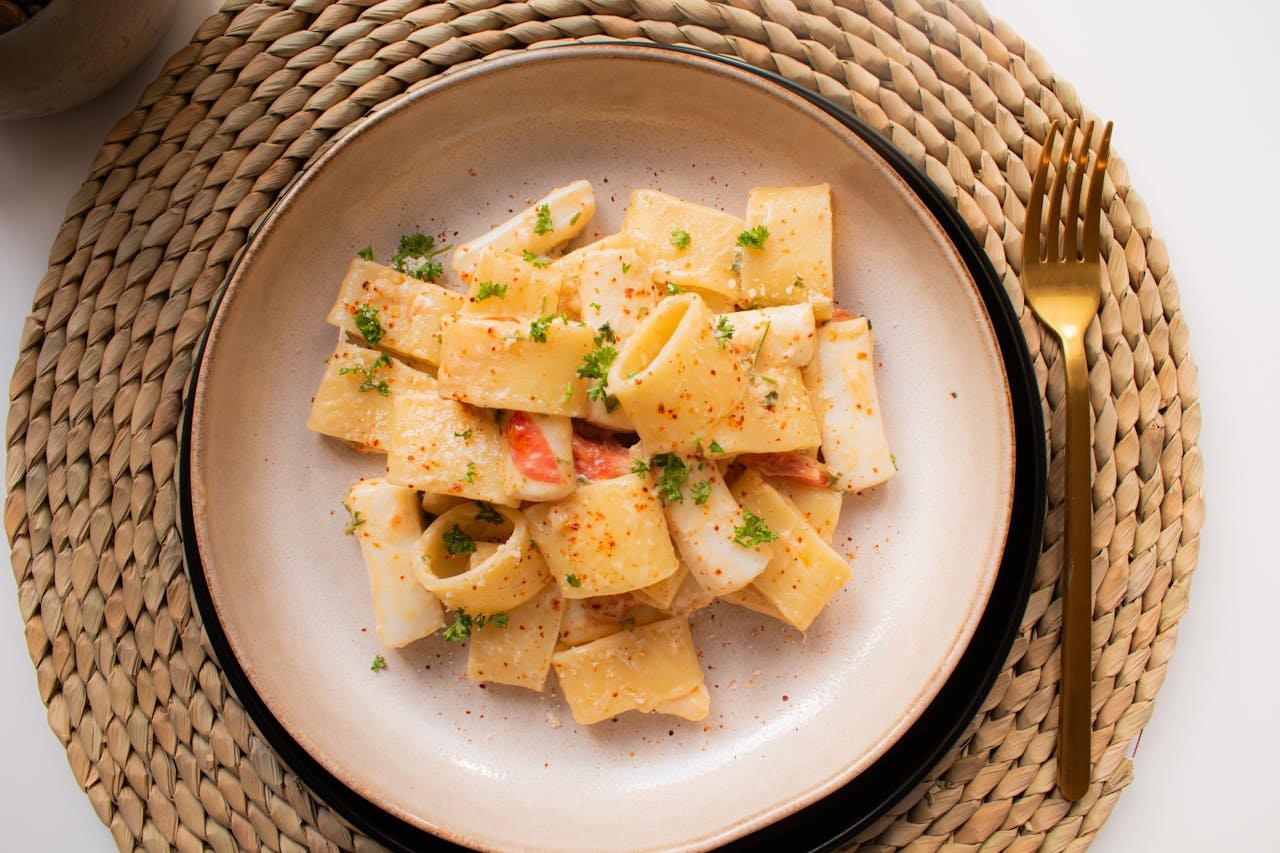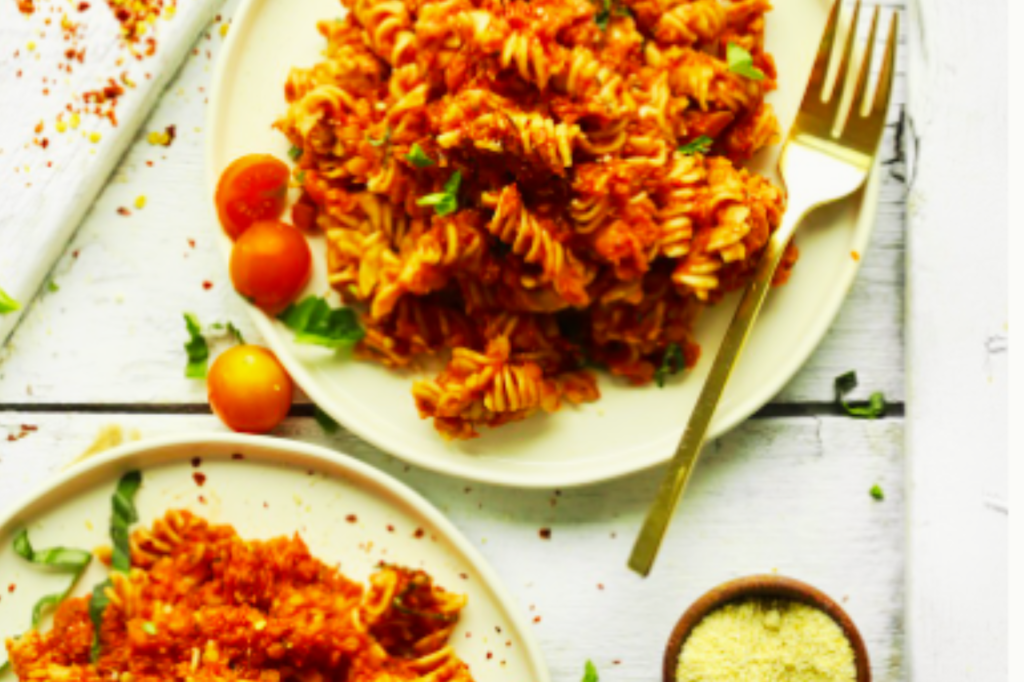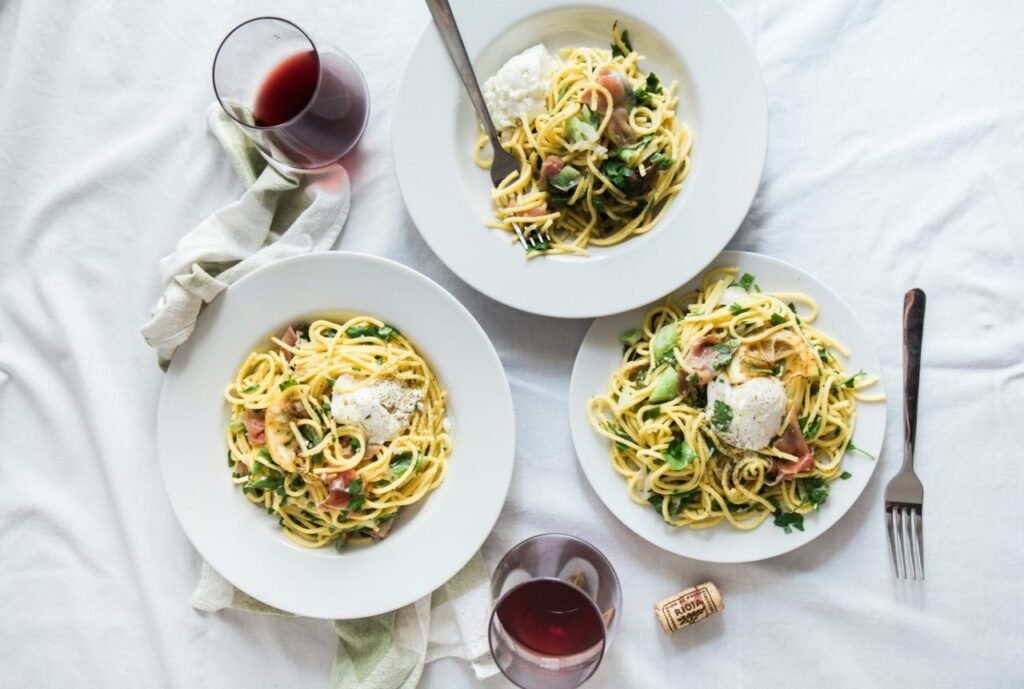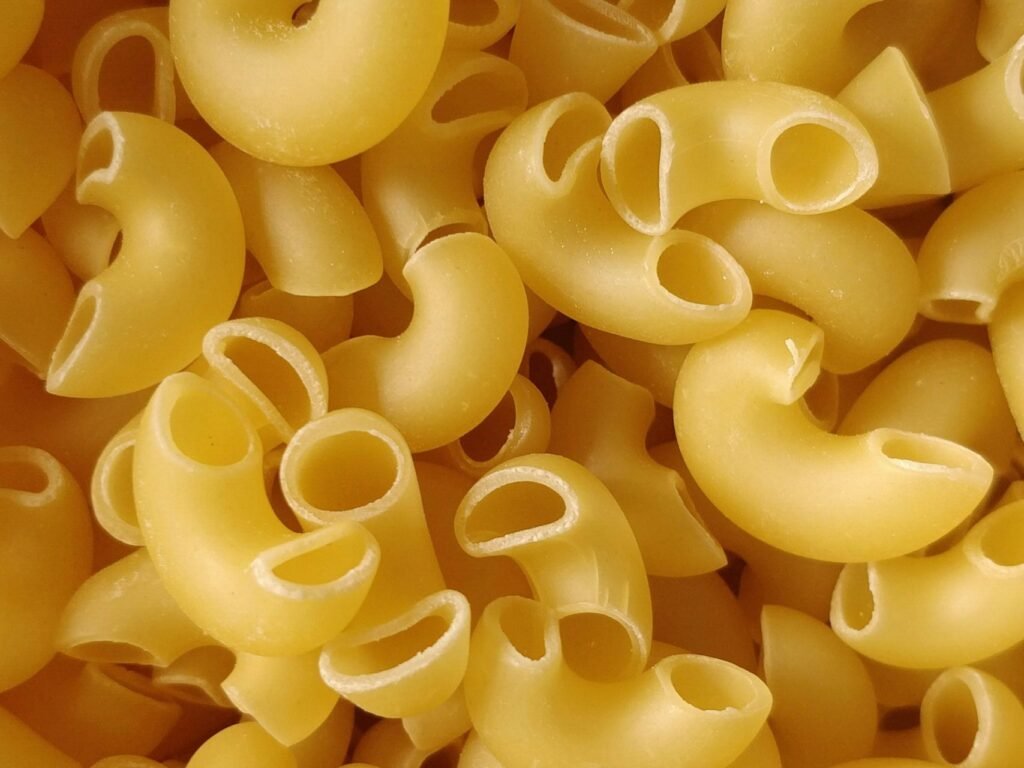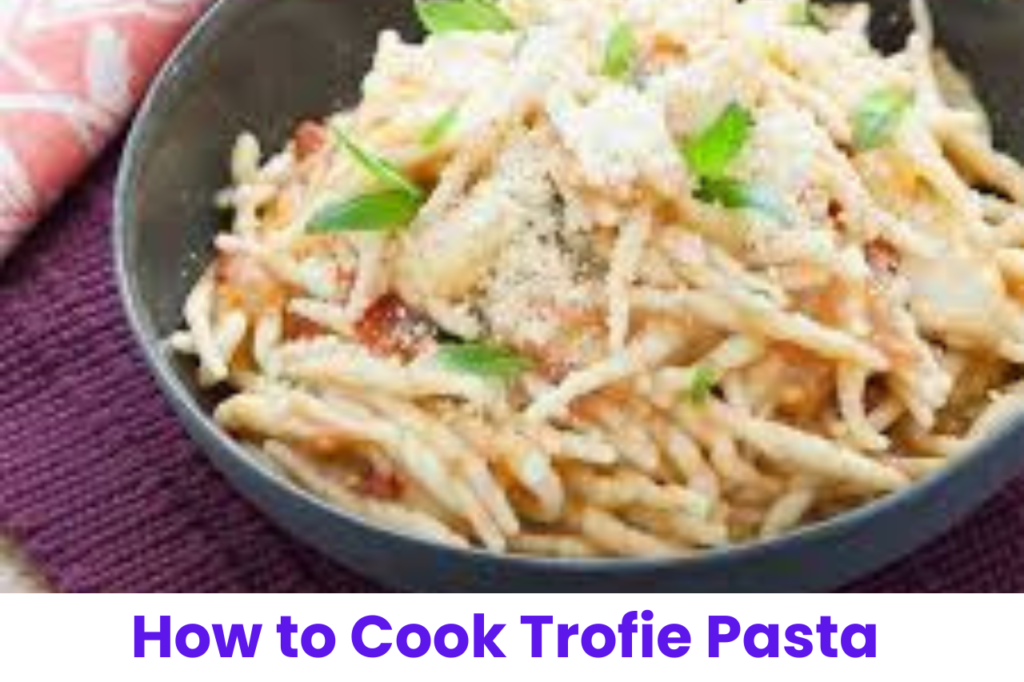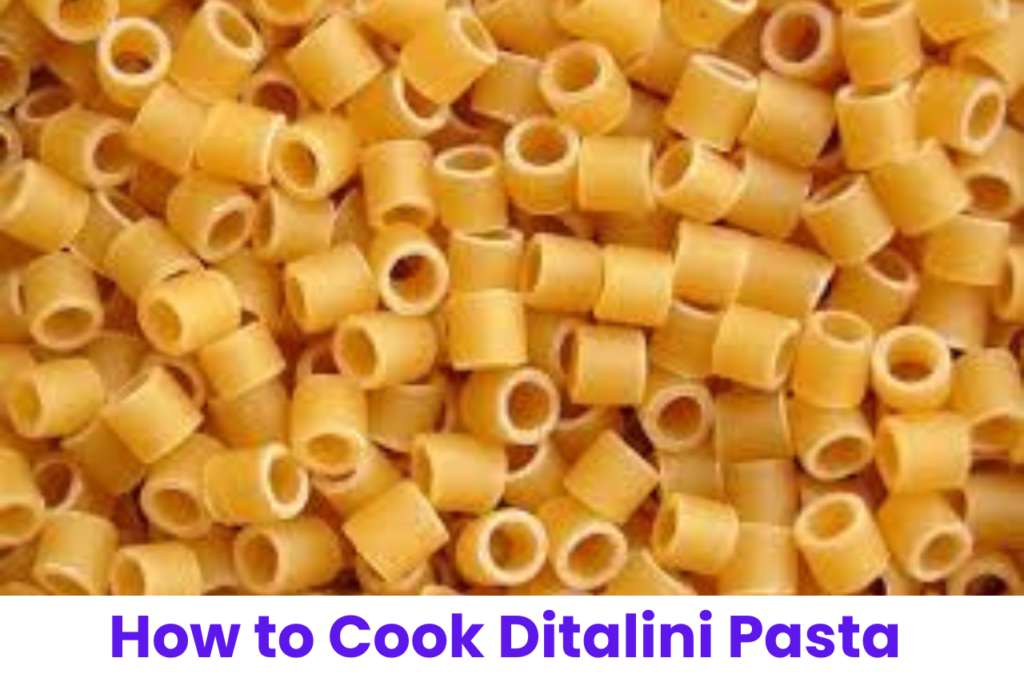Paccheri pasta, with its large, tubular shape and origins in Campania, Italy, holds a special place in the realm of Italian cuisine. This versatile pasta variety, often associated with Neapolitan cooking, is beloved for its ability to capture and hold rich sauces within its hollow tubes. Paccheri’s name is derived from the Italian word “pacca,” meaning “slap,” suggesting the sound the pasta makes when it’s cooked al dente and lightly pressed with a fork. In this article I will guide you how to cook paccheri pasta.
What sets paccheri apart is its size and texture. Each tube is approximately one inch in diameter, creating a substantial and satisfying bite that pairs exceptionally well with hearty sauces. This pasta’s versatility allows for various culinary interpretations, from classic tomato-based recipes to more elaborate seafood or meat-based dishes.
Paccheri’s preparation requires attention to detail, from choosing the right sauce to achieving the perfect al dente texture during cooking. In this far reaching guide, we’ll dig into the craft of cooking paccheri pasta, investigating its beginnings, the fundamental fixings required, and bit by bit directions to make delectable dishes that praise the pith of Italian cooking.
Choosing the Right Ingredients
To master the art of cooking paccheri pasta, start with high-quality ingredients that complement its robust texture and shape. Here’s a breakdown of the essential components:
1. Paccheri Pasta
- Opt for authentic Italian paccheri pasta made from durum wheat semolina. Look for brands known for their traditional pasta-making methods to ensure quality.
2. Sauce Base
- Select a sauce that complements paccheri’s substantial size. Rich tomato-based sauces, creamy seafood sauces, or hearty ragùs work exceptionally well.
3. Fresh Ingredients
- Utilize new garlic, onions, spices like basil or parsley, and top notch olive oil to upgrade the flavor profile of your dish.
4. Cheese
- Grate Parmigiano-Reggiano or use creamy cheeses like ricotta or mozzarella for added richness and depth.
5. Protein (Optional)
- Include protein sources such as Italian sausage, seafood (shrimp, mussels, clams), or hearty vegetables like eggplant or mushrooms for a satisfying meal.
By selecting the right ingredients, you set the stage for a delicious paccheri pasta dish that highlights the pasta’s unique qualities and elevates its flavor profile.
Preparation Steps
Cooking paccheri pasta to perfection involves careful preparation and execution. Follow these detailed steps to achieve a delicious and satisfying dish:
1. Boiling the Water
- Fill a large pot with water and bring it to a rolling boil. Use plenty of water to allow the pasta to cook evenly without sticking together.
2. Salting the Water
- Add a generous amount of salt to the boiling water. The water should taste like the sea to properly season the pasta during cooking.
3. Cooking the Paccheri Pasta
- Carefully add the paccheri pasta to the boiling water. Stir gently to prevent sticking and cook according to the package instructions or until al dente.
4. Making the Sauce
- While the pasta cooks, prepare the sauce. Heat olive oil in a skillet and sauté garlic and onions until fragrant. Add tomatoes or other sauce ingredients and simmer.
5. Draining and Mixing
- Once the pasta is al dente, reserve a cup of pasta cooking water, then drain the paccheri. Add the drained pasta to the sauce in the skillet and toss to coat evenly.
6. Adding Cheese and Finishing
- Remove from heat and stir in grated Parmigiano-Reggiano or other cheeses. Adjust seasoning with salt and pepper as needed.
7. Serving
- Transfer the paccheri pasta to serving plates or a large bowl. Garnish with fresh herbs like basil or parsley and additional cheese if desired.
By following these detailed preparation steps, you’ll be able to create a mouthwatering paccheri pasta dish that’s sure to impress your guests or family members.
Serving Suggestions
Paccheri pasta is a versatile dish that can be served in various ways to suit different preferences and occasions. Here are some creative serving suggestions to elevate your paccheri pasta experience:
1. Classic Meat Ragu
- Serve paccheri pasta with a rich and hearty meat ragu sauce made with ground beef, pork, or a combination of both. The sauce should be slow-cooked to develop deep flavors that complement the robust paccheri noodles.
2. Seafood Medley
- For a taste of the sea, pair paccheri pasta with a seafood medley featuring shrimp, scallops, mussels, and calamari. Toss the pasta in a garlic-infused olive oil sauce with a splash of white wine and fresh herbs.
3. Vegetarian Delight
- Create a satisfying vegetarian dish by topping paccheri pasta with sautéed vegetables such as bell peppers, zucchini, and cherry tomatoes. Finish with a drizzle of pesto or a creamy ricotta cheese sauce.
4. Baked Paccheri
- Transform paccheri pasta into a comforting baked dish by stuffing the tubes with a mixture of ricotta, spinach, and Parmesan cheese. Top with marinara sauce and mozzarella, then bake until bubbly and golden.
5. Creamy Alfredo
- Indulge in a creamy Alfredo sauce by combining paccheri pasta with a rich blend of heavy cream, butter, and Parmesan cheese. Add cooked chicken or crispy pancetta for a decadent twist.
6. Simple Tomato Basil
- Let the flavors of ripe tomatoes and fresh basil shine by tossing paccheri pasta in a simple tomato sauce infused with garlic and olive oil. Finish with a sprinkle of grated Parmesan and torn basil leaves.
7. Garnishes and Accompaniments
- Enhance the presentation of your paccheri pasta dish with garnishes such as chopped parsley, grated cheese, or a drizzle of high-quality olive oil. Serve alongside crusty bread and a crisp green salad for a complete meal.
Experiment with these serving ideas to create a memorable dining experience with paccheri pasta. Whether you prefer classic Italian flavors or modern twists, there’s a serving suggestion to suit every taste.
Cooking Techniques for Paccheri Pasta
Cooking paccheri pasta to perfection requires attention to detail and the right techniques. Here’s how to cook paccheri pasta flawlessly:
1. Boiling the Water
- Use a large pot filled with plenty of water to ensure that the pasta has enough space to cook evenly. Add salt to the water (about 1-2 tablespoons per gallon) to enhance the pasta’s flavor.
2. Cooking Time
- Check the package instructions for the recommended cooking time for al dente paccheri pasta. Typically, paccheri requires about 12-14 minutes to reach the desired texture. Taste the pasta towards the end of cooking to ensure it’s firm but not too hard.
3. Stirring and Separating
- Stir the pasta occasionally during cooking to prevent sticking and ensure even cooking. Separating the pasta with a fork or spoon at the beginning of cooking can help prevent clumping.
4. Testing for Doneness
- Test the pasta by biting into a piece to check for the desired texture. Paccheri should be al dente, which means it should have a slight bite without being mushy.
5. Reserve Pasta Water
- Before draining the pasta, reserve a cup of the cooking water. This starchy water can be used to adjust the consistency of your pasta sauce and help it adhere better to the noodles.
6. Draining and Rinsing
- Once cooked to al dente, drain the paccheri pasta in a colander but avoid rinsing it with water. Rinsing removes the starch that helps sauces cling to the pasta.
7. Incorporating into Sauce
- Transfer the drained pasta directly into your prepared sauce or skillet with other ingredients. Toss the pasta gently to coat it evenly with the sauce, allowing it to absorb flavors.
8. Resting Period
- Let the pasta rest for a few minutes after combining it with the sauce. This allows the flavors to meld together before serving.
Mastering these cooking techniques will ensure that your paccheri pasta turns out perfectly cooked and delicious every time. Experiment with different sauces and ingredients to create your signature paccheri dishes.
Serving and Enjoying Paccheri Pasta
Now that you’ve cooked your paccheri pasta to perfection, it’s time to serve and savor this delightful Italian dish. Here’s how to present and enjoy your paccheri pasta creation:
1. Plating with Style
- Use a wide-rimmed pasta bowl or a large serving plate to showcase the beauty of paccheri pasta. Arrange the pasta neatly with the sauce and garnish on top.
2. Garnishing
- Sprinkle freshly grated Parmesan cheese or Pecorino Romano over the pasta for added flavor. You can also garnish with fresh herbs like basil, parsley, or oregano for a burst of color and aroma.
3. Pairing with Wine
- Serve paccheri pasta with a glass of Italian red wine such as Chianti, Barbera, or Montepulciano. The acidity and fruitiness of these wines complement tomato-based pasta dishes perfectly.
4. Serving Accompaniments
- Accompany your paccheri pasta with a side of crusty bread or garlic bread to mop up the delicious sauce. A fresh green salad with a light vinaigrette can also be served on the side.
5. Enjoying the Meal
- Sit down with family and friends to enjoy your homemade paccheri pasta. Share stories and laughter over this comforting and satisfying Italian meal.
6. Storing Leftovers
- If you have leftovers, store them in an airtight container in the refrigerator for up to 2-3 days. Reheat gently on the stovetop or in the microwave, adding a splash of water or broth to revive the sauce.
7. Experimenting with Variations
- Use paccheri pasta as a base for creative variations. Try different sauces such as creamy Alfredo, seafood marinara, or pesto alla Genovese. Add vegetables, meats, or seafood to customize your paccheri dishes.
8. Sharing the Recipe
- Share your paccheri pasta recipe with friends and family. Encourage them to try making this classic Italian dish at home and enjoy the experience of cooking and eating together.
Conclusion: How to Cook Paccheri Pasta
In conclusion, paccheri pasta is a versatile and delicious type of pasta that can be cooked in various ways to suit different tastes and preferences. Whether you prefer it with a rich meat sauce, creamy tomato sauce, or stuffed and baked with cheese, paccheri offers a satisfying culinary experience.
The key to cooking perfect paccheri pasta lies in selecting high-quality ingredients, cooking the pasta al dente, and pairing it with complementary sauces or fillings. Experiment with different recipes and ingredients to discover your favorite way of enjoying this traditional Italian pasta.
We hope this guide has inspired you to try cooking paccheri pasta at home and explore the rich flavors of Italian cuisine. With these tips and recipes, you can create impressive and flavorful dishes that will delight family and friends alike.
Buon appetito!
Read More: How to Cook Red Lentil Pasta: A Comprehensive Guide of Cooking and Enjoying
FAQs
Paccheri and rigatoni are both tube-shaped pasta varieties, but paccheri is larger and wider than rigatoni. Paccheri has a smoother texture and is often used for stuffing due to its size, while rigatoni is slightly smaller and more commonly used in traditional pasta dishes.
Paccheri pasta is versatile and can be used in various dishes. It is ideal for hearty sauces like meat ragùs, seafood dishes, and baked pasta dishes. The wide tubes of paccheri can also be stuffed with fillings such as ricotta and baked.
To fill paccheri, use a piping bag or a small spoon to stuff the cooked pasta tubes with your desired filling, such as ricotta cheese mixed with herbs, spinach, or meat. Once filled, the paccheri can be arranged in a baking dish, topped with sauce, and baked until golden and bubbly.
To cook paccheri or any pasta on the stove:
Bring a large pot of salted water to a boil.
Add the paccheri pasta and cook according to package instructions or until al dente (usually around 12-14 minutes).
Drain the cooked pasta and toss with your favorite sauce or ingredients.

